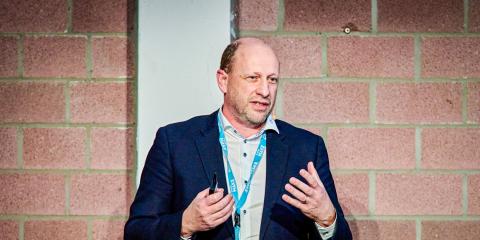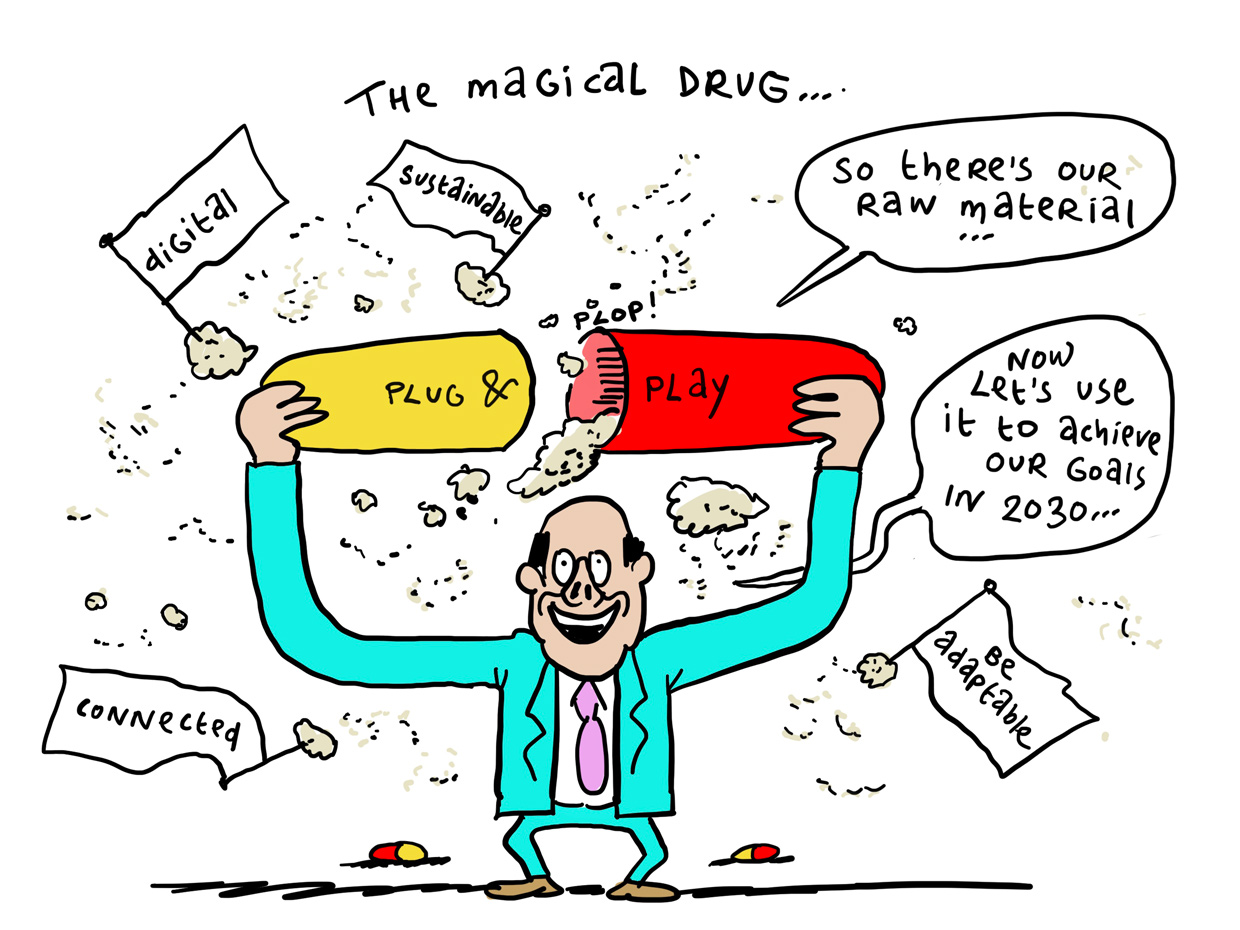Carbon-neutral and circular by 2030: Janssen in Geel invests in ambitious vision of the future

Carbon-neutral and circular by 2030: Janssen in Geel invests in ambitious vision of the future
Partly due to the corona crisis, the management of Janssen's pharmaceutical plant in Geel noticed that its work processes are not sufficiently agile, connected and sustainable. Janssen's Yves Vancleemput explained at the Flanders Make Symposium how they plan to change this by 2030. Among other things, the factory should be carbon-neutral by 2030 and there should be a digital twin of each production department.
Of course, the names 'Janssen' and 'Johnson & Johnson' need little introduction. "Every day, about a billion people use one of our products," stated Yves Vancleemput, director of business development at Janssen, illustrating the reach of the pharmaceutical group Johnson & Johnson. A few more figures on the pharmaceutical giant's Belgian hub: Janssen Belgium currently employs some 2,400 researchers, and it invested more than 2.2 billion euro in R&D last year.
Vancleemput came to talk about Janssen's plant in Geel. Chemical production takes place there, as opposed to pharmaceutical production, which takes place at the sites in Beerse and Olen. The Geel plant is a high-tech chemical production site responsible for the production of the active pharmaceutical ingredients (APIs) of medicines, the active substances responsible for the healing effect.

Corona pandemic as wake-up call
"A few years ago it felt like we were on top of the world with our plant, and like we had everything on track for the next 10 years," Vancleemput said. "We were doing absolutely fine and we were grossing in recognitions."
In 2019, the chemical production site received the Factory of the Future Award (from action plan Made Different) by leading the way in new technologies and production methods. For a wastewater treatment project developed with Flemish partner InOpSys, the plant had received the grand prize at the Belgian Business Awards for the Environment a year earlier.
But then came the corona pandemic, which hit the company hard. "The Covid crisis represented a real wake-up call," Vancleemput told us. "We proved unable to adapt sufficiently to the changing circumstances."
Seamless technology transfers
An action plan was drawn up to become much more agile and connected (or 'connected') by 2030. Sustainability also needed to be pushed even higher, with waste generation a key focus. "Because of the nature of our business, our site in Geel currently produces about half of all the waste generated by Johnson & Johnson as a whole. That needs to be reduced quite a bit."
A first step the pharma manufacturer undertook was a screening that determined what level the Geel plant was at. In terms of agility, it was found to be using only 10% of its technological capabilities. The score for connectivity - after a digital maturity scan - was 2.7 out of 5 and the score for sustainability 50%.
The team then looked at what goals it could realistically set by 2030. In terms of agility, they decided that the time for technology transfers between the pilot plant and commercial production should be drastically reduced: from six months to less than one month. The pilot plant is the bridge between lab-scale API production and large-scale commercial production.
"We want to achieve a seamless transfer of technology, data and knowledge between our pilot plant and our commercial production," Vancleemput clarified. "For that, we need to work in a modular, scalable and reconfigurable way."
A big role here is played by plug-and-produce technology, equipment that you can deploy in different departments without modification. "The aim is to arrive at technology that we can move from our pilot plant to our commercial production, or vice versa, if necessary, and switch on immediately. Now, when such a move occurs, the technology has to be reprogrammed each time."
Digital twins of production departments
In terms of connectivity, digital twins are a priority. A digital twin is a virtual representation of a physical product, a digital double that behaves just like the physical system or like a certain aspect of that system. With these digital twins, the team in Geel can get a razor-sharp picture of the efficacy of its production facilities, more easily prevent problems, make adjustments more efficiently and test updates digitally before actually implementing them.
"Right now, our digital twins are still in an embryonic state," Vancleemput admitted. "But the goal is to have a digital twin available from all our production departments by 2030. We will focus on the meso and macro scale, working at the micro level will lead to data overload." Excel files should then be a thing of the past, completely replaced by a digital process. "With all these measures, we should be able to predict both small and disruptive changes and adapt to them efficiently."
Smaller ecological footprint thanks to AI
In terms of sustainability, the ambition is not just to be fully carbon-neutral by 2030. Five years earlier, by 2025, all electricity used should already come from renewable sources. The site already has solar panels and a wind turbine, so a fifth of the electricity it needs is already renewable. "To increase that percentage, we are investing in offshore wind farms in the North Sea, among other things."
Besides material technology, the plant is also setting its sights on techniques that use artificial intelligence (AI) to make its operation greener. "We want to use AI to implement our chemical knowledge more efficiently," Vancleemput explained. "For instance, AI could help us make optimal use of energy and materials, resulting in lower energy consumption and less waste, which would obviously reduce our carbon footprint heavily."
Call for collaboration
Specifically, the Geel plant is betting on 12 focus areas and 75 programmes in its 2030 planning. That major operation obviously requires serious investment. The team estimates the necessary capital expenditure at 140 million euros and operational expenditure at 30 million. "In 2030, thanks to all the hard work and investment, we should be able to celebrate the launch of our first product made 100 per cent carbon-neutral and circular, from the start of the development process to the moment a customer gets their hands on the product."
For the final stage, transport to customers, Janssen set up, among other things, a project to test whether medicines and blood samples can be sustainably transported by drones in the future. To this end, Janssen is currently working with the University Hospital Antwerp.
"Additional partners are always welcome, not only for this project, but in general," Vancleemput concluded with a call for collaboration. "We would like to invite all interested parties to join us on our innovative journey towards 2030."
This keynote was part of Flanders Make's Symposium, the annual event where (inter)national speakers present the technology trends that will shape the future of the industry. The 2022 edition focused on the path to 'a sustainable, digital and competitive industry'.
